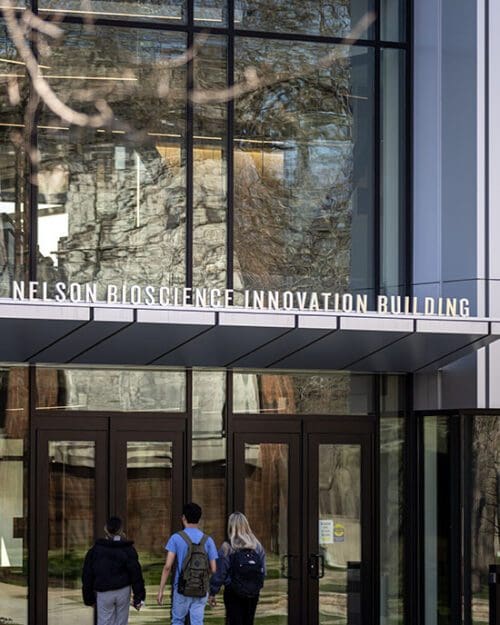
PNW Completes State-of-the-Art Nils K. Nelson Bioscience Innovation Building
August 21, 2020
Years of planning, months of construction and countless hours of work are finally coming to fruition this fall semester as PNW celebrates the opening of the Nils K. Nelson Bioscience Innovation Building.
Located on the Hammond campus, the building plays host to our nursing and biological sciences departments. Boasting an eye-catching design and close to 70,000 square feet of space, the building was created with two main goals in mind – to offer a wide array of spaces for students to work and collaborate in and also maintain flexibility for future growth and changing learning methods.
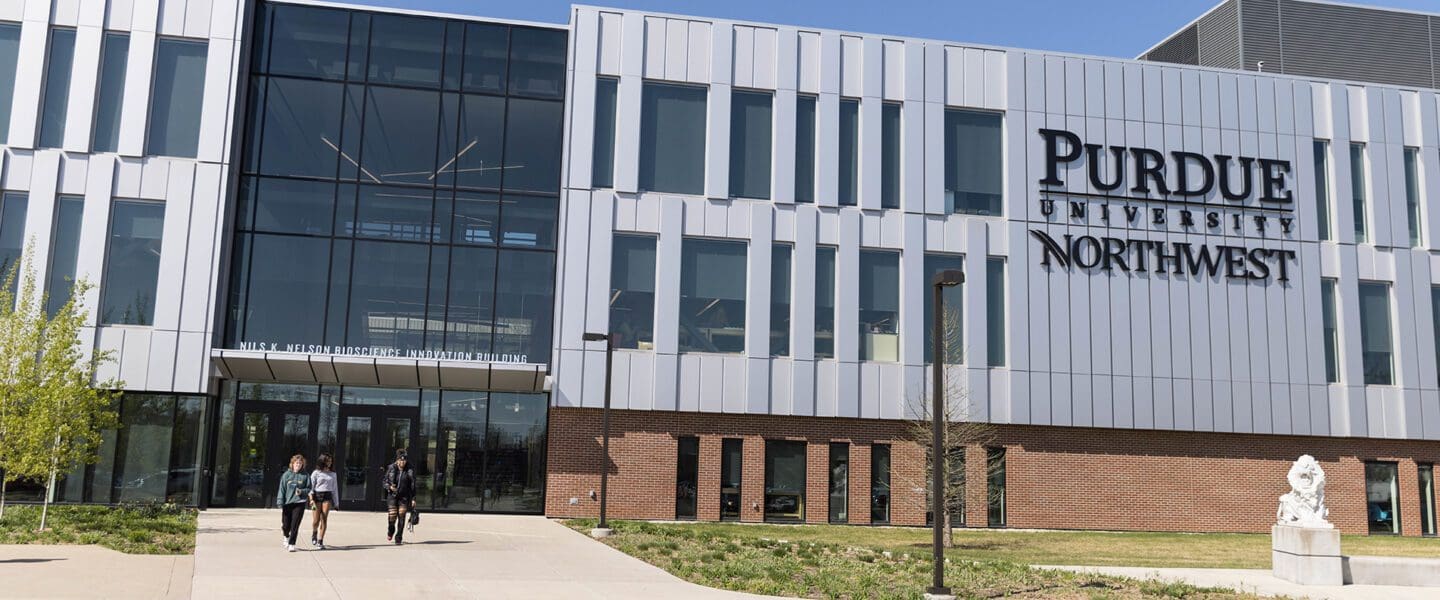
“This is the first academic building that we’ve constructed since 1998 and we built it 100 percent student-first and student focused,” said Jacob Lenson, Assistant Vice Chancellor for Campus Planning, Infrastructure and Facilities. “Our faculty gave up some of the amenities that they’re used to in order to make sure students could have things that they wouldn’t be able to get otherwise.”
One of the biggest changes was limiting office space. The bioscience faculty offices were cut down to tight, glass walled rooms while the nursing faculty are now working out of a modern, community space with flexible cubicles. In exchange, the Nelson building is filled with pockets of space where students can study, or sit and work together – something that was hard to find in any of PNW’s older buildings.
“We heard our students loud and clear. One of the number-one needs they expressed was somewhere to sit,” said Lenson. “Our demographics are shifting, and we’re getting more and more full-time students. They were telling us ‘we want somewhere to go between classes, we don’t want to have to sit in our cars,’ and we did our best to accommodate that.”
To help foster collaboration and inspire students and visitors alike, every classroom and research lab that faces out to the central stairwell and lobby has a glass wall. These classrooms host some of the most dynamic courses at PNW.
Nursing students, for example, will be on display as they work on highly advanced mannequins. Students and researchers studying the biological sciences will do lab work and make scientific breakthroughs while passersby look on. PNW calls the practice “science on display.”
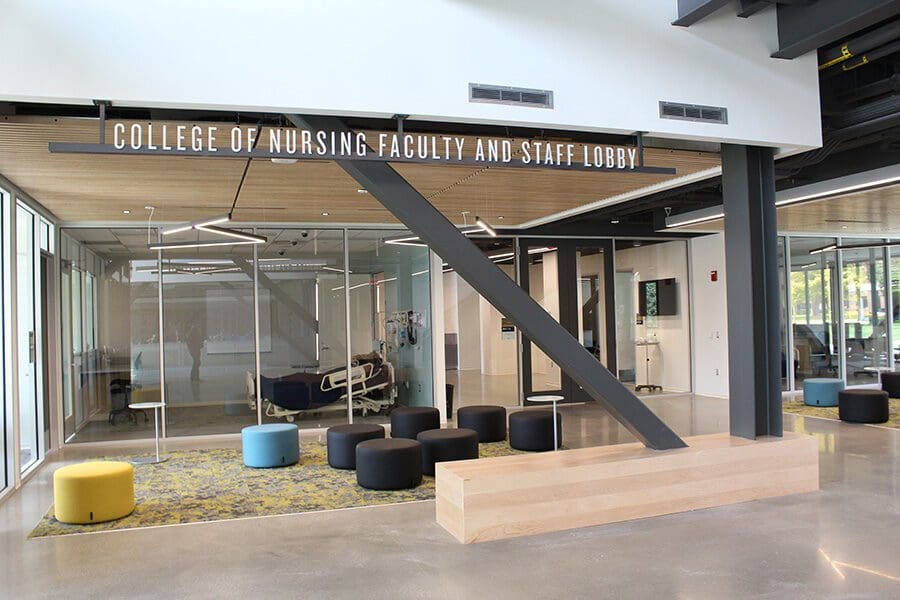
To help foster collaboration and inspire students and visitors alike, every classroom and research lab that faces out to the central stairwell and lobby has a glass wall.
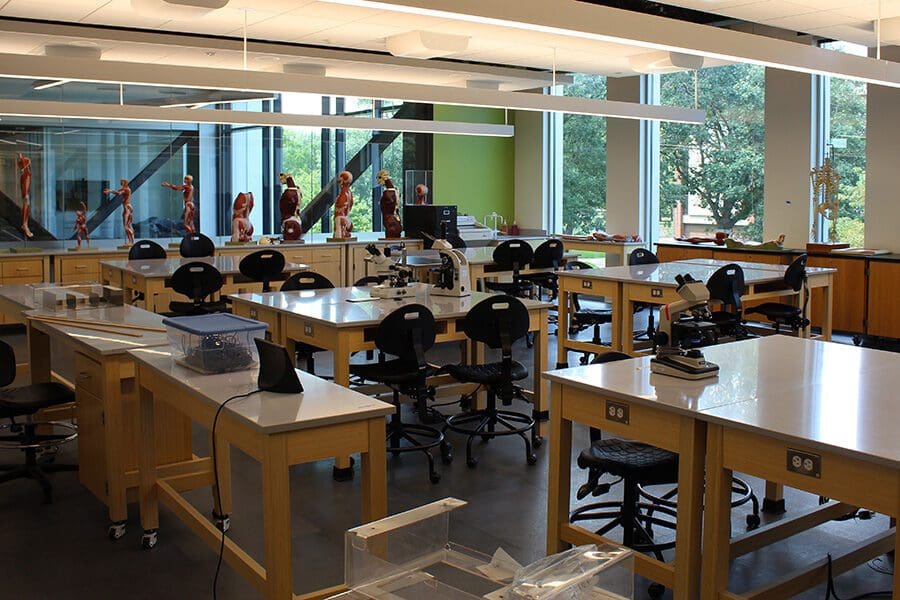
Students and researchers studying the biological sciences will do lab work and make scientific breakthroughs while passersby look on.
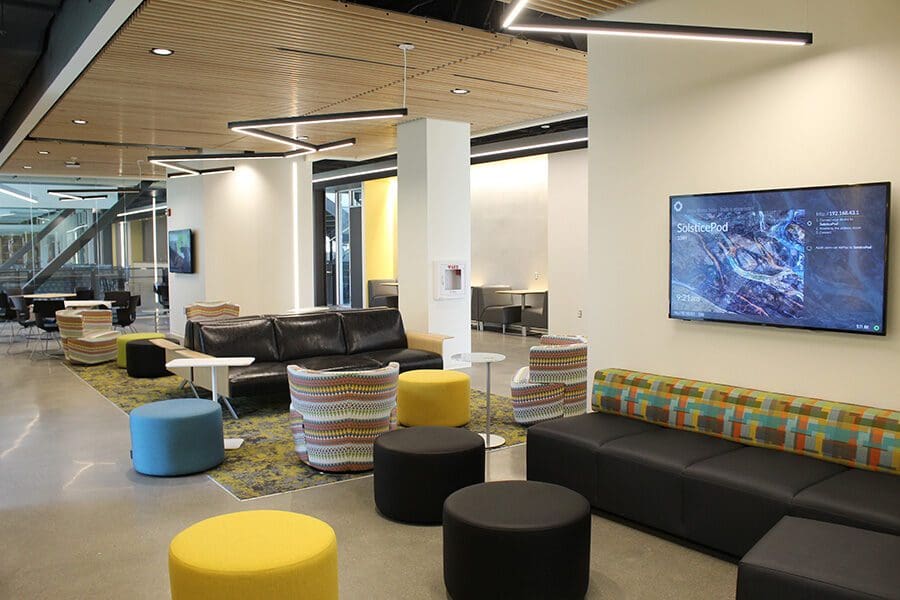
The Nelson building is filled with pockets of space where students can study, or sit and work together.
“Those mannequins can do just about everything a person can do except get up and walk out of the bed,” said Lisa Hopp, Dean of the College of Nursing. “Science will be on clear view to anyone that makes their way through the building.”
The building is certain to be heavily trafficked, as it is positioned right next to the campus’ main parking lot.
“The location was chosen so that this would be the entryway for campus, our front door,” said Chris Holford, Provost and Vice Chancellor for Academic Affairs. “We wanted to make a statement to the community about the value of our programs. When you look at those facilities, you can see that we put these biology and nursing programs into the most state-of-the-art building that we have.”
The new facilities are set to make a huge impact on the way students learn, according to Hopp. It has entire sections designed to look like physicians’ offices or acute care facilities, with monitoring stations and debriefing rooms situated right next door or across the hall.
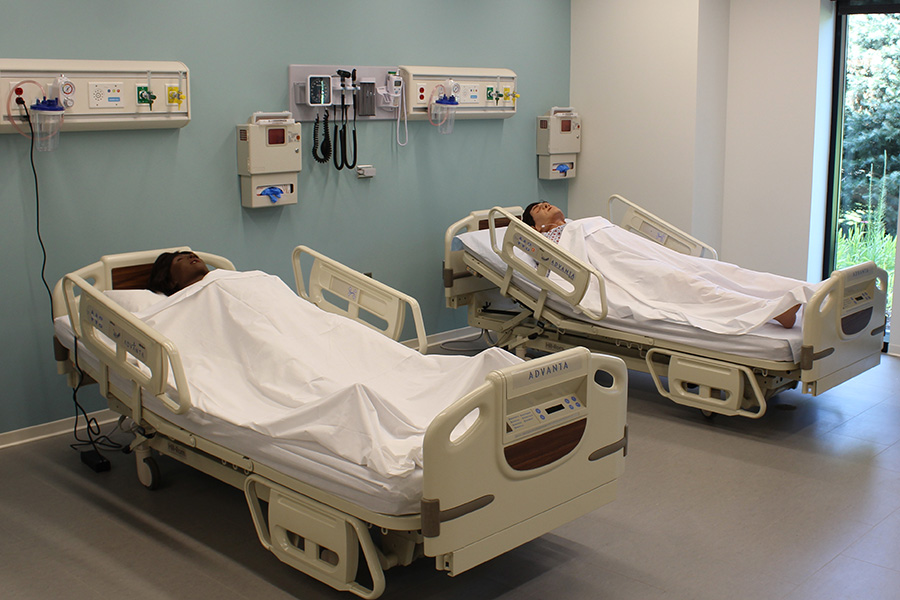
“It’s about as close as the students can get to working in actual facilities from the safety of a laboratory,” said Hopp. “We can control their learning experience, while making things even closer to reality because these rooms look just like a real hospital room would look. It’s really powerful learning, and those nearby debriefing rooms are where you can really capitalize on the simulation.”
One of the main challenges when designing a building is ensuring it will stand the test of time. With an academic building, especially one built for courses as dynamic as those in the sciences, the task is even more difficult thanks to constantly evolving curriculums and technology. PNW designed the entire space to be highly malleable with room to grow.
“I was determined to keep flexibility and fluidity in mind while we built this,” said Hopp. “Flexibility that things can change, and fluidity so that we can change them quickly and almost seamlessly in the midst of learning. You’re not trying to build a building for today, you’re trying to build it for the next 50 years.”
See a time-lapse of the construction for the Nels K. Nelson Bioscience Innovation Building.
Classes will look a little different this fall due to the COVID-19 pandemic, but students are already getting the chance to visit the Nelson building – and it will not be long before they get to work within its halls.
“Right away, students are going to be in this brand-new building, in these new training spaces,” Holford said. “We really feel that with these spaces, we can provide some of the best education in Northwest Indiana.”